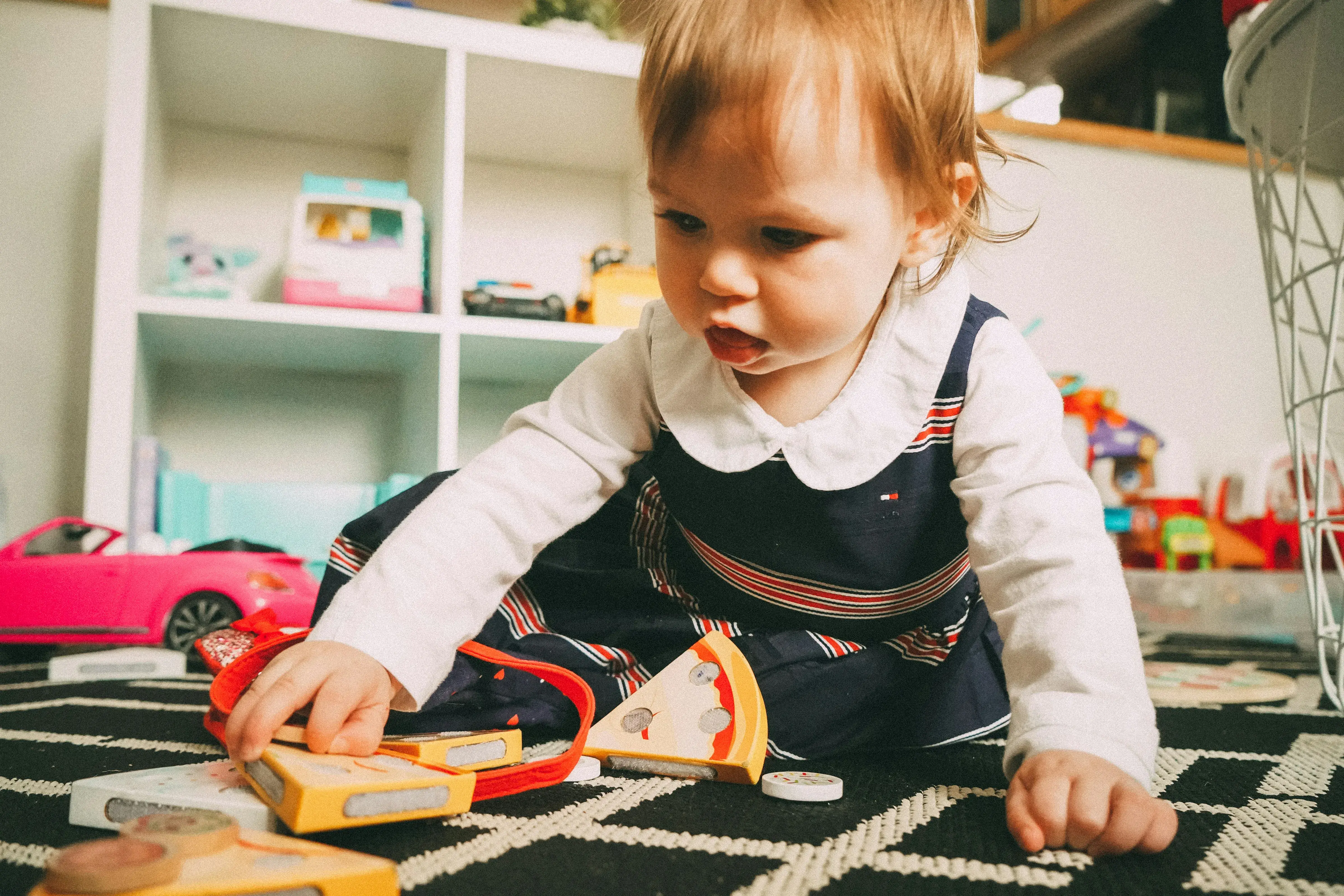Navigating Daycare and Sleep Challenges for Babies and Toddlers
 By
Mellow Editorial Team
·
5 minute read
By
Mellow Editorial Team
·
5 minute read

If your baby or toddler is in daycare, you’re likely facing unique sleep challenges. It’s natural to worry about how daycare might impact your child’s sleep, but the good news is that you can still have a great little sleeper even if daycare naps are inconsistent.
Focus on Nights at Home
While you might not have full control over naps at daycare, you can still ensure restful sleep at night by focusing on a strong nighttime routine at home. This approach helps maintain your child’s sleep progress despite irregular daytime naps.
Adjusting to Daycare
Babies and toddlers often need time to adjust to napping in a new environment like daycare. Initially, your child might get less sleep during the day, leading to overtiredness and disrupted night sleep. However, daycare sleepers usually become great nappers over time.
To help ease the transition:
- Early Bedtime: Offering an early bedtime, as early as 6:00 pm, can help your child catch up on lost daytime sleep. Although a catnap after daycare might seem tempting, it’s often better to skip it in favor of an earlier bedtime. This approach reduces the risk of disrupted nights and early morning wakings.
- Communicate with Caregivers: Share the strategies that work well at home with your child’s daycare teacher. They want your child to nap well too and may be able to incorporate your tips into the daycare routine.
- If naps end too late in the day, last too long, or are offered when your toddler no longer needs one, your child might benefit from a later bedtime—think around 8:00 pm or even later. A later bedtime allows for more active awake time, which helps build the sleep drive needed for them to fall asleep easily and stay asleep through the night.
Handling Daycare Schedules
Daycare schedules can differ from your home routine, but that doesn’t mean your child’s sleep will suffer. Most daycares follow set schedules to meet the needs of all the children, and your child will adapt over time.
If your child is struggling with the daycare schedule:
- Early Bedtime: This remains the go-to strategy for catching up on lost sleep.
- Ask About a Catnap Option: A short 20-minute nap in the morning or afternoon depending on which nap is being dropped and how your child is adjusting. I catnap can help prevent overtiredness as your child adjusts.
If your baby is under 15 months old and still taking two naps, transitioning to a single daily nap when starting daycare can be challenging. Here’s a guide to help you ease this transition smoothly.
How Long Does it Take for Daycare Nap Success?
The adjustment period can vary widely. While some little ones may adapt to daycare naps within a few days or weeks, others might take a couple of months to settle into the new routine. Starting daycare is a significant transition for both you and your child, so it’s important to be patient and give yourselves grace during this period of adjustment.
If Your Child Won’t Nap at Daycare
If your baby is over 12 months old, consider sending a comfort object from home, like a stuffed animal, blanket, or lovey, to help them feel secure. Ideally, introduce this object before starting daycare and have multiple identical ones so there's always a clean backup available.
For babies younger than 12 months, introduce the comfort object during wakeful periods outside the crib. After 12 months, this object can accompany them in the crib during naps.
Here are some tips for introducing a comfort object:
- Choose the object thoughtfully: Ensure it’s safe and durable since it will likely become an essential part of your child’s life for years. Consider sleeping with it yourself or tucking it into your shirt, so it carries your scent when you introduce it to your child.
- Incorporate the object into nap and bedtime routines: Encourage your little one to hold it during snuggles and bedtime stories. If it’s a stuffed animal, let your toddler kiss it goodnight as part of the routine.
- Make it a part of everyday activities: Involve the comfort object in playtime, snuggles, and walks. Tuck it next to your child in the stroller during outings to help them associate it with comfort and security.
Managing the Ride Home
If possible, try to keep your little one awake during the ride home from daycare. If they do fall asleep, aim for a nap of no longer than 30 minutes, and extend the next wake window by 30-40 minutes to ensure they’re ready for bedtime.
Why Your Toddler Naps at Daycare but Not at Home
It can be puzzling when your toddler naps well at daycare but resists napping at home. Here are some reasons why this happens:
- Routine: Daycares often follow a consistent, predictable routine, which helps cue your toddler that it’s time to nap. Toddlers thrive on this predictability, making it easier for them to settle down.
- Peers: Seeing other children napping can create a sense of “peer pressure” that motivates your toddler to nap too. They know they’re not missing out on anything exciting.
- Stimulation: Daycare activities can be mentally and physically stimulating, tiring your toddler out enough to need a nap.
If your toddler is resisting naps at home, first consider possible reasons: Are wake windows appropriately timed? Is the sleep environment conducive to rest? Does your child have a comforting pre-nap routine?
Some toddlers may refuse to nap at home due to separation anxiety. During these times, it's essential to provide extra comfort and support. Assisting your child with sleep during this phase won’t derail their progress; instead, it reinforces their sense of security. Children adapt quickly, and it’s more important to ensure they feel safe during periods of anxiety than to strictly adhere to sleep training.
Responding to separation anxiety with comfort and reassurance is crucial while also fostering their confidence in being apart from you for short periods. If your toddler is clingy before naps or bedtime, consider incorporating extra cuddles during the day and in their pre-sleep routine. Consistency is key, as it offers comfort and security.
For more tips, check out our post about separation anxiety for smoother sleep.
Additional Considerations for Napping and Routines
Have you noticed that some children fall asleep at the same time every day, no matter what else is happening? These children might even nod off during lunch if it’s served a bit too late! Others seem to have an easier time falling asleep some days, while struggling on others—these children often benefit from a very consistent routine. While some toddlers may require less daytime sleep and more at night, others still need long naps during the day.
Temperament and Sleep
Children's sleep patterns are often influenced by their temperament—the personality traits they’re born with. Some babies are naturally adaptable and adjust easily to new situations, while others need a consistent, daily routine to thrive. One child might drift off to sleep with ease, whether in a crib at home or at daycare, while another might wake up the moment they’re placed in a crib alone. Understanding your child’s temperament can help you tailor their sleep routine to better meet their needs. Consider taking our temperament assessment and exploring tips on adapting to your child's unique temperament.
Circadian Rhythms and Sleep
Another factor that affects nap time is your child’s natural sleep cycle, governed by their circadian rhythms. This internal “clock” regulates patterns of sleep, wakefulness, hunger, body temperature, and hormone releases over a 24-hour period. The amount of sleep your child needs, when they feel tired, and how easily they fall asleep are all linked to these circadian rhythms.
Frequent changes in routine can disrupt circadian rhythms, leading to inconsistent sleep and suboptimal daytime functioning. Stabilizing your child’s sleep patterns and maintaining consistent routines—such as regular meal times and wake-up schedules—can help regulate their circadian rhythms, leading to more predictable and restful sleep.
During the transition period, consider adjusting your child’s schedule at home. Can you transfer some of the missed daytime sleep to nighttime? For example, an earlier bedtime or later wake-up time might help balance their wake window before the nap.
Remember, any changes in sleep schedules will take a few days to show their full effects, as it takes about three days for circadian cycles to adjust. While the changes may not seem effective at first, stick with them to allow your child’s body rhythms to adapt. Gradual changes are typically easier and less disruptive for your child. For instance, you might shift bedtime earlier by just 15 minutes each day until you reach the desired time, such as a 6 PM bedtime.
One of the most significant factors in shifting and stabilizing the circadian cycle is wake-up time, as it has the greatest influence on daytime sleep and bedtime.
Conclusion
Navigating the sleep challenges that come with daycare can feel daunting, but with the right strategies, you can help your little one adjust and thrive. Whether it’s focusing on a consistent nighttime routine, communicating with caregivers, or understanding the role of temperament and circadian rhythms in your child’s sleep, there are plenty of tools at your disposal.
Remember, it’s normal for daycare adjustments to take time, and offering extra comfort and support during this transition is key. With patience, consistency, and a bit of trial and error, your child can become a great sleeper both at home and at daycare.


